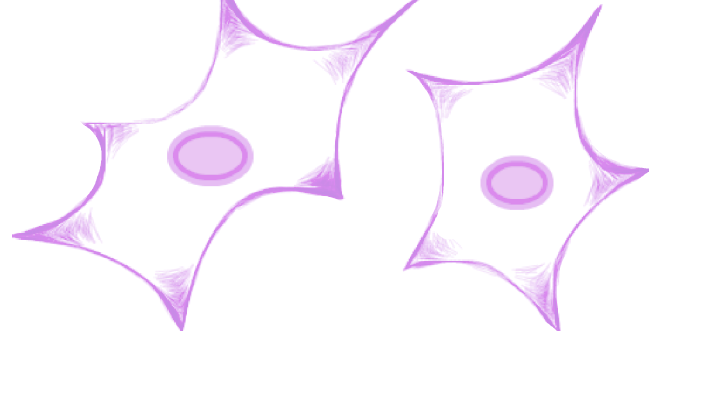Cell Senescence Entries for CDKN1A
- Cell Types
- Fibroblast
- Cell Lines
- LF1
- Cancer Cell?
- No
- Method
- Knockout
- Type of senescence
- Oncogene-induced, Replicative, Stress-induced
- Senescence Effect
- Induces
- Primary Reference
- Brown et al. (1997) Bypass of senescence after disruption of p21CIP1/WAF1 gene in normal diploid human fibroblasts. Science 277(5327)831-4 (PubMed)
CDKN1A Gene Information
- HGNC symbol
- CDKN1A
- Aliases
- CAP20; CDKN1; CIP1; P21; p21CIP1; p21Cip1/Waf1; SDI1; WAF1
- Common name
- cyclin dependent kinase inhibitor 1A
- Entrez Id
- 1026
- Description
- This gene encodes a potent cyclin-dependent kinase inhibitor. The encoded protein binds to and inhibits the activity of cyclin-cyclin-dependent kinase2 or -cyclin-dependent kinase4 complexes, and thus functions as a regulator of cell cycle progression at G1. The expression of this gene is tightly controlled by the tumor suppressor protein p53, through which this protein mediates the p53-dependent cell cycle G1 phase arrest in response to a variety of stress stimuli. This protein can interact with proliferating cell nuclear antigen, a DNA polymerase accessory factor, and plays a regulatory role in S phase DNA replication and DNA damage repair. This protein was reported to be specifically cleaved by CASP3-like caspases, which thus leads to a dramatic activation of cyclin-dependent kinase2, and may be instrumental in the execution of apoptosis following caspase activation. Mice that lack this gene have the ability to regenerate damaged or missing tissue. Multiple alternatively spliced variants have been found for this gene. [provided by RefSeq, Sep 2015].
CDKN1A Ontologies
- Gene Ontology
-
Process: GO:7049; cell cycle
GO:16310; phosphorylation
GO:51726; regulation of cell cycle
GO:7346; regulation of mitotic cell cycle
GO:60255; regulation of macromolecule metabolic process
GO:72331; signal transduction by p53 class mediator
GO:7095; mitotic G2 DNA damage checkpoint signaling
GO:7507; heart development
GO:32091; negative regulation of protein binding
GO:90398; cellular senescence
GO:8285; negative regulation of cell population proliferation
GO:30308; negative regulation of cell growth
GO:71493; cellular response to UV-B
GO:79; regulation of cyclin-dependent protein serine/threonine kinase activity
GO:34198; cellular response to amino acid starvation
GO:6977; DNA damage response, signal transduction by p53 class mediator resulting in cell cycle arrest
GO:48146; positive regulation of fibroblast proliferation
GO:2000379; positive regulation of reactive oxygen species metabolic process
GO:7265; Ras protein signal transduction
GO:1904706; negative regulation of vascular associated smooth muscle cell proliferation
GO:6974; cellular response to DNA damage stimulus
GO:71479; cellular response to ionizing radiation
GO:2000045; regulation of G1/S transition of mitotic cell cycle
GO:82; G1/S transition of mitotic cell cycle
GO:45860; positive regulation of protein kinase activity
GO:2000134; negative regulation of G1/S transition of mitotic cell cycle
GO:10389; regulation of G2/M transition of mitotic cell cycle
GO:31668; cellular response to extracellular stimulus
GO:42326; negative regulation of phosphorylation
GO:90400; stress-induced premature senescence
GO:97193; intrinsic apoptotic signaling pathway
GO:1902806; regulation of cell cycle G1/S phase transition
GO:1904030; negative regulation of cyclin-dependent protein kinase activity
GO:1904031; positive regulation of cyclin-dependent protein kinase activity
GO:1905179; negative regulation of cardiac muscle tissue regeneration
GO:2000279; negative regulation of DNA biosynthetic process
GO:6606; protein import into nucleus
GO:6978; DNA damage response, signal transduction by p53 class mediator resulting in transcription of p21 class mediator
GO:9411; response to UV
GO:10629; negative regulation of gene expression
GO:30890; positive regulation of B cell proliferation
GO:42060; wound healing
GO:42246; tissue regeneration
GO:42771; intrinsic apoptotic signaling pathway in response to DNA damage by p53 class mediator
GO:43068; positive regulation of programmed cell death
GO:45736; negative regulation of cyclin-dependent protein serine/threonine kinase activity
GO:71480; cellular response to gamma radiation
GO:90399; replicative senescence
GO:2000278; regulation of DNA biosynthetic process
Cellular component: GO:5634; nucleus
GO:5737; cytoplasm
GO:5654; nucleoplasm
GO:16604; nuclear body
GO:5829; cytosol
GO:32991; protein-containing complex
GO:5730; nucleolus
GO:307; cyclin-dependent protein kinase holoenzyme complex
GO:70557; PCNA-p21 complex
Hide GO termsFunction: GO:46872; metal ion binding
GO:16301; kinase activity
GO:31625; ubiquitin protein ligase binding
GO:5515; protein binding
GO:4860; protein kinase inhibitor activity
GO:4861; cyclin-dependent protein serine/threonine kinase inhibitor activity
GO:19901; protein kinase binding
GO:44877; protein-containing complex binding
GO:19912; cyclin-dependent protein kinase activating kinase activity
GO:30332; cyclin binding
GO:140311; protein sequestering activity
Homologs of CDKN1A in Model Organisms
In other databases
- GenAge model organism genes
- A homolog of this gene for Mus musculus is present as Cdkn1a
- GenAge human genes
- This gene is present as CDKN1A
- GenAge microarray genes
- This gene is present as CDKN1A
- LongevityMap
- This gene is present as CDKN1A
- CellAge gene expression
- This gene is present as CDKN1A
External links
- OMIM
- 116899
- Ensembl
- ENSG00000124762
- Entrez Gene
- 1026
- UniGene
- 732576
- 1000 Genomes
- 1000 Genomes
- HPRD
- GenAtlas
- CDKN1A
- GeneCards
- CDKN1A
